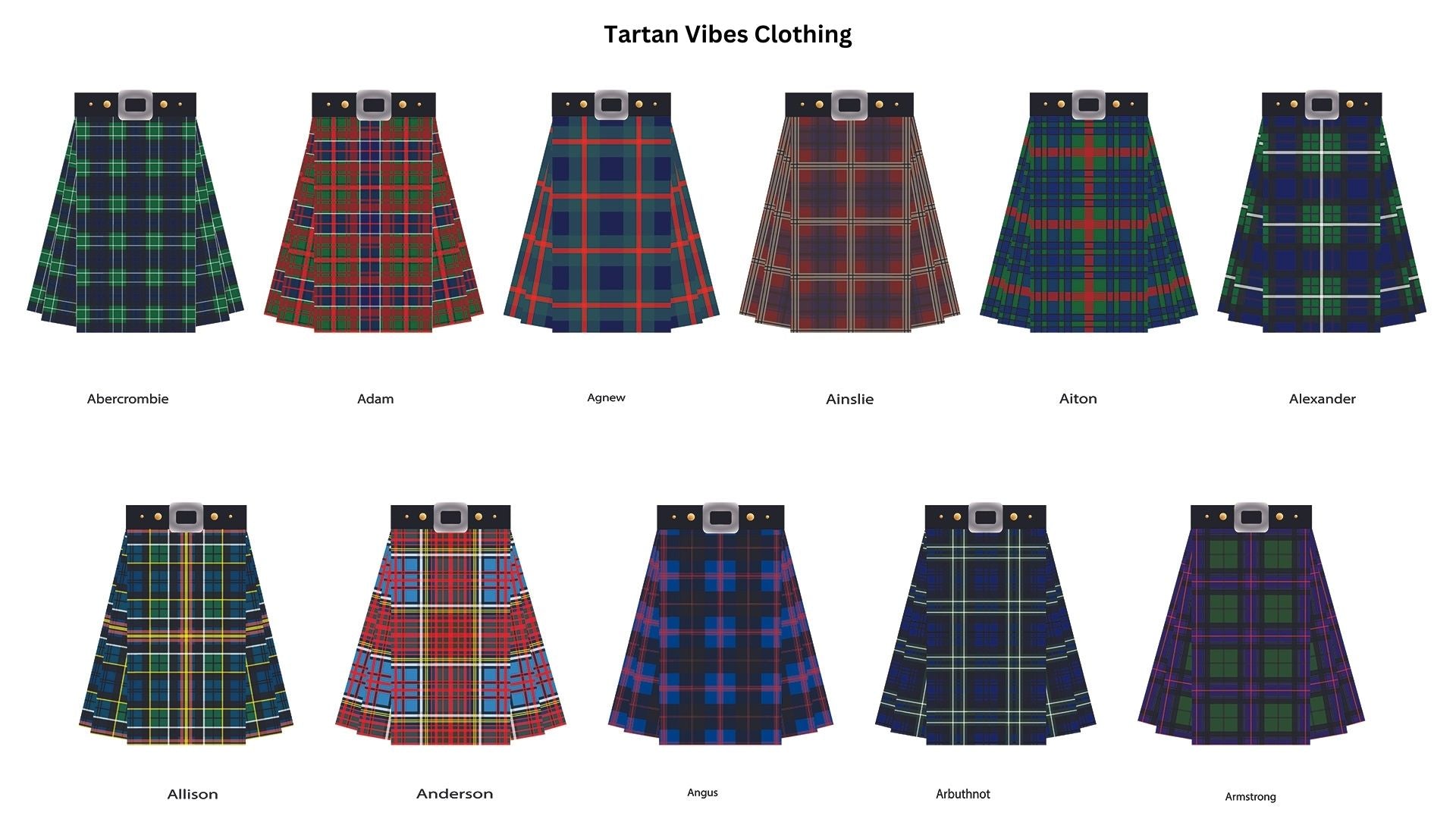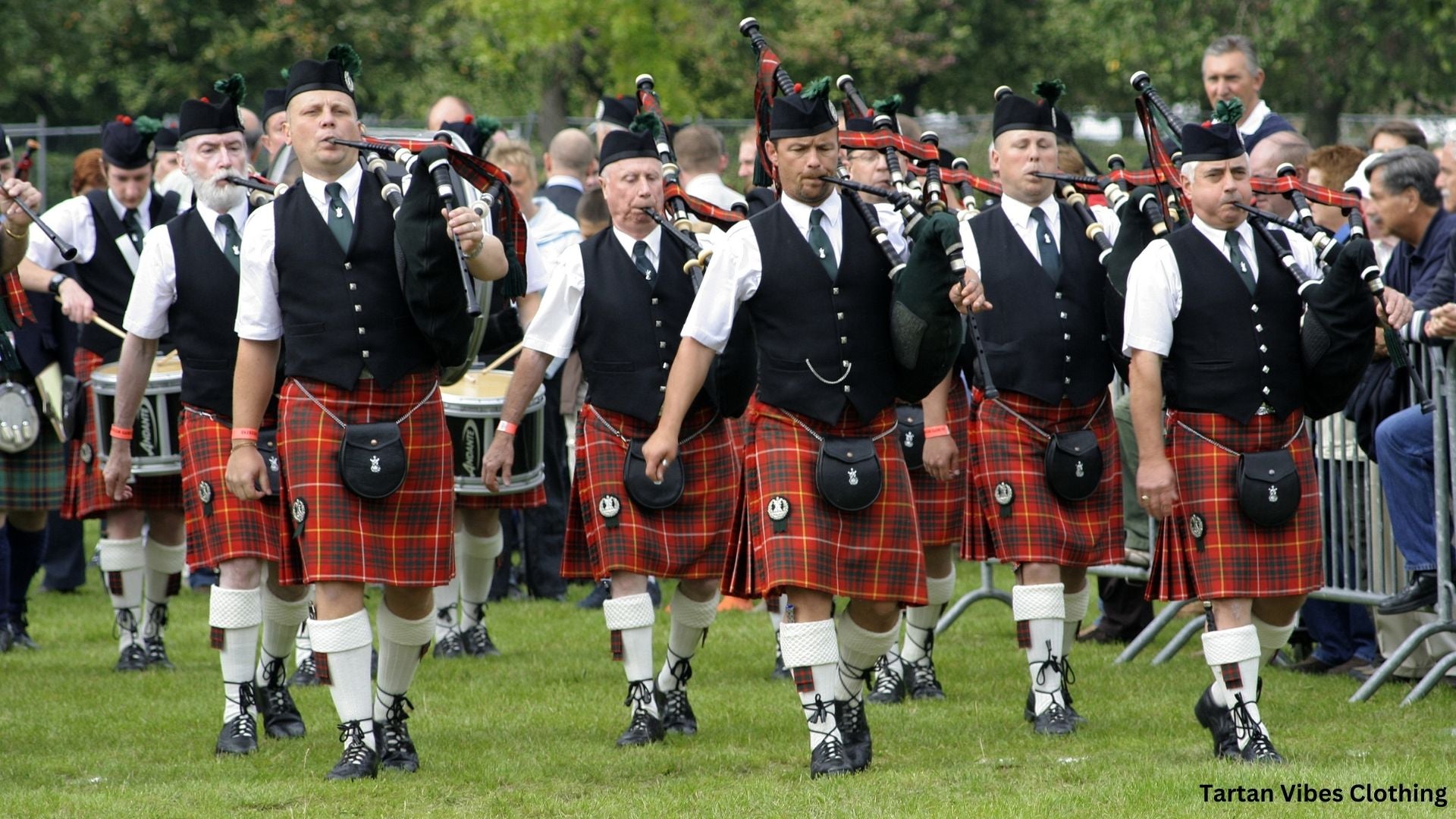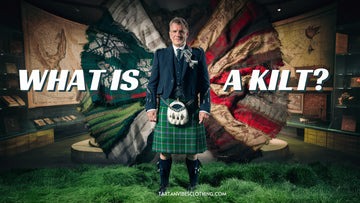What is a Kilt? Unraveling the Threads of Tradition and History
by Marcus Harris on Jan 06, 2024
Table of Content
Introduction
In a world filled with diverse cultural garments, the kilt stands out as a symbol of Scottish tradition and pride. But what is a kilt? Join us on a journey through time and fabric as we explore the origins and rich history of this iconic garment.
What is a Kilt and Why Does it Matter?
Origins of the Kilt
The kilt, born from early Celtic garments, seamlessly marries functionality with cultural expression. These ancient attires laid the foundational threads for what would evolve into the iconic kilt, where practicality meets tradition in a unique tapestry.
As the kilt progressed, its journey intertwined intimately with the development of traditional Highland dress. Over the ages, this distinctive garment adapted, a responsive evolution that retained its cultural significance while meeting the evolving needs of wearers. This dynamic metamorphosis solidified the kilt's place as a cornerstone in Highland attire.
The diverse influence of different clans played a pivotal role in shaping the kilt into a multifaceted emblem. Each clan contributed distinct patterns and colors, transforming the garment into a personalized reflection of identity. This amalgamation of influences not only enriched the aesthetic appeal of the kilt but also deepened the narrative of tradition, showcasing the vibrant diversity within the practice of kilt-wearing.

Construction and Design
Delving into the intricate artistry of kilt construction reveals a process that harmoniously weaves together various elements, creating a garment that seamlessly blends tradition with functionality.
Fabrics Used in Kilt Making: In the crafting of a kilt, the choice of fabric is a pivotal decision. Traditional materials such as wool take center stage, prized for their durability, comfort, and ability to showcase intricate patterns. The careful selection of fabrics not only contributes to the kilt's visual appeal but also ensures longevity and a connection to heritage.
Tartans: Significance and Variations: Tartans, synonymous with kilts, extend beyond mere patterns—they embody profound significance. Beyond their visual allure, tartans often convey familial or regional affiliations, each variation telling a unique story. Exploring the variations in tartan patterns unravels a rich tapestry of history, where every stripe and hue contributes to the broader narrative of the wearer's heritage.
Role of Pleats and Folds: Pleats and folds play a pivotal role in both the aesthetic and functional aspects of a kilt. Their arrangement is not arbitrary; rather, it is a thoughtful design choice that provides freedom of movement while maintaining the structured form of the garment. Understanding the meticulous placement of pleats and folds unveils the engineering brilliance behind the kilt, showcasing how form and function intricately dance together in this iconic piece of attire.
Cultural Significance and Modern Adaptations
As we journey beyond the stitches and pleats of the kilt's construction, we uncover a narrative woven with cultural symbolism and a surprising adaptability to the rhythms of modern life.
Symbolic Embodiment: The kilt, beyond its fabric and folds, serves as a living emblem of heritage and identity. It's not just a garment; it's a tangible link to one's roots, proudly declaring familial and regional connections. Each pleat and pattern tells a story, making the act of wearing a kilt a profound expression of cultural pride.
Adapting to Modern Lifestyles: In the tapestry of contemporary living, kilts have seamlessly transitioned from their historical context into diverse lifestyles. No longer confined to ceremonial occasions, the kilt effortlessly struts into modern fashion, whether gracing formal events or adding flair to casual gatherings. This adaptability isn't just about staying relevant; it's a testament to the kilt's ability to evolve without losing its cultural soul.
Global Influences: The influence of the kilt stretches far beyond the misty Highlands, resonating globally. Enthusiasts and designers worldwide have embraced its timeless appeal, incorporating kilt elements into fashion and cultural events. This global dance of styles underscores the kilt's universal charm, proving that traditions can be both rooted and borderless, connecting hearts across continents.
Exploring the cultural significance and modern adaptations of the kilt is an immersion into a story that's as vibrant as the patterns on the fabric, showcasing its enduring relevance in a world where tradition and innovation dance hand in hand.
Wearing a Kilt: A Stylish Symphony of Tradition and Detail
Donning a kilt is a nuanced art, a choreography that intertwines tradition with personal flair, demanding attention to the minutest details.
The proper way to wear a kilt is a mastery of pleats and fit, a craftsmanship that transcends mere clothing. It's a nod to cultural heritage, requiring precision and respect in execution.
Beyond the kilt, accessories like sporrans, belts, and jackets are not mere embellishments but essential notes in the ensemble. Each accessory plays a distinct role, contributing to both the visual aesthetics and cultural richness of the kilted attire. It's not just about putting on clothes; it's about orchestrating a harmonious symphony of elements.
Choosing when to wear a kilt is a deliberate act. Whether it's the formality of an event, the celebration of a wedding, or the ease of a casual gathering, the kilt transforms into more than just fabric; it becomes a tailored statement, resonating with the significance of the moment.
In the grand tapestry of wearing a kilt, every fold, every accessory, and every occasion weaves together to create a stylish narrative—one that celebrates tradition with a contemporary flourish, inviting individuals to embrace the artistry of this timeless and culturally profound attire.

Symbolism in Kilts: Unveiling the Tapestry of Heritage and Identity
Exploring the symbolism within kilts reveals a rich narrative that goes beyond mere clothing, weaving together threads of heritage and individual identity.
Clan Affiliations and Crests: Kilts serve as a canvas for clan affiliations and crests, transforming them into wearable emblems of familial pride. The intricate patterns and colors tell stories of lineage and allegiance, turning kilts into living expressions of the rich tapestry of clan history.
Expressing Identity through Kilts: Wearing a kilt transcends the realm of fashion; it's a personal declaration of identity. Kilts provides a unique platform for individuals to express their roots, values, and individuality. Each fold and hue becomes a brushstroke on the canvas of self-expression, turning kilts into personalized symbols of identity.
Rituals and Ceremonies: Kilts play a central role in rituals and ceremonies, adding a layer of ceremonial significance to their already rich symbolism. Whether it's weddings, funerals, or other rites of passage, kilts become more than attire—they embody the solemnity and tradition of the occasion, making each pleat and pattern a participant in the ceremony.

Common Misconceptions about Kilts: Disentangling Truth from Fiction
Exploring the prevailing misconceptions surrounding kilts necessitates a detailed examination, where we aim to shed light on stereotypes and dispel myths that have long influenced public perception.
Stereotypes and Myths: Kilts have often been burdened with stereotypes, such as the misconception that they are exclusively worn by men in Scotland. In reality, kilts have a global presence, embraced by people of various genders and ethnicities. Dissecting these stereotypes allows us to appreciate the diverse and inclusive nature of kilt-wearing.
Clarifying Cultural Appropriation: Cultural appropriation concerns sometimes cloud the understanding of kilts, with people questioning if wearing a kilt is appropriate. However, when individuals of non-Scottish heritage wear kilts with respect for the garment's cultural significance, it can be a celebration rather than appropriation. Clarifying this distinction helps foster a more nuanced appreciation for diverse cultural expressions.
Debunking Fashion Misunderstandings: Fashion-related misconceptions about kilts often revolve around their perceived impracticality or limited scope of wear. Contrary to these beliefs, kilts are incredibly versatile and can be adapted to various occasions, from formal events to casual outings. By debunking these misunderstandings, we open the door to a more accurate understanding of the kilt's adaptability and cultural richness.
Kilted Events and Festivals: Celebrating Culture in Style
Draped in tradition and flair, kilts take center stage at various events and festivals, providing a vibrant display of Scottish heritage across the globe.
Highland Games: The Highland Games stand as a quintessential celebration of Scottish culture, where participants clad in kilts engage in a range of traditional athletic competitions. Caber tossing, hammer throwing, and tug-of-war, all set against a backdrop of kilts, create a spectacle that not only showcases physical prowess but also encapsulates the spirit of Scottish tradition.
Tartan Day Celebrations: Tartan Day, observed on April 6th, is a global celebration of Scottish heritage, and kilts play a prominent role in these festivities. Parades, concerts, and cultural events feature individuals proudly donning kilts adorned with various tartans, symbolizing a collective tribute to Scotland's rich history and influence.
Showcasing Scottish Heritage Globally: Beyond specific events, kilts are increasingly becoming a symbol of showcasing Scottish heritage globally. Whether it's in international fashion shows, cultural festivals, or community gatherings, the kilt stands as a versatile ambassador, proudly representing Scotland's unique traditions and contributing to a global tapestry of cultural appreciation.
In the lively realm of kilted events and festivals, Highland Games, Tartan Day celebrations, and global showcases collectively underscore the enduring appeal of kilts, serving as vibrant vessels that carry the rich traditions of Scottish heritage to diverse corners of the world.

Conclusion
From the ancient threads of Celtic garments to the vibrant hues of contemporary designs, kilts have proven to be more than just clothing – they're living symbols of cultural pride and identity. Feel free to delve further into this rich tradition, and who knows, you might find a bit of your own story woven into the folds of a kilt. Until our next adventure, cheers!
Frequently Asked Questions
When Were Kilts Invented?
The exact origin of kilts is challenging to pinpoint. Kilt-like garments have historical roots, with the modern Scottish kilt evolving over centuries. The precise invention date remains unclear.
Do Irish Wear Kilts?
Irish traditional dress typically does not include kilts. Kilts are more closely associated with Scottish attire, and the Irish have their distinct traditional clothing.
What Country Wears Kilts?
Kilts are most commonly associated with Scotland. Scottish kilts, with their distinctive tartans, have become a symbol of Scottish identity. However, kilts are also worn in other countries, often for cultural events and ceremonies.
Why Do Men Wear Kilts?
Men wear kilts for various reasons. Historically, kilts symbolize cultural identity and clan affiliation in Scotland. Today, they are worn for formal events, weddings, and as a celebration of heritage and fashion.
When Did Scots Start Wearing Kilts?
The historical timeline of Scots wearing kilts dates back centuries. Early forms of kilt-like garments were worn, but the modern Scottish kilt, as recognized today, took shape in the 16th century.
Where Did Kilts Originate?
The origin of kilts is rooted in the Celtic and Gaelic cultures of Scotland and Ireland. The design and use of kilts evolved over time, with regional influences shaping their development.











